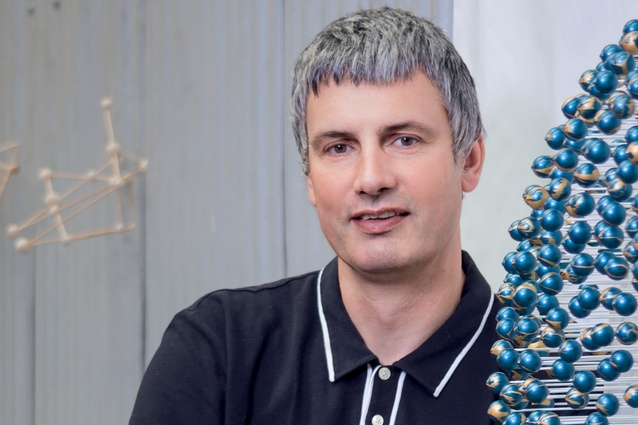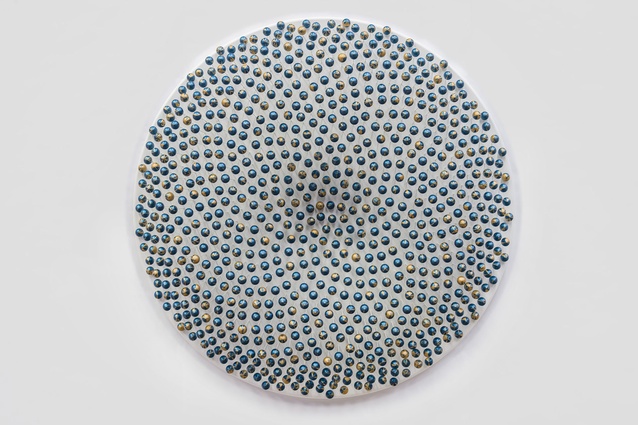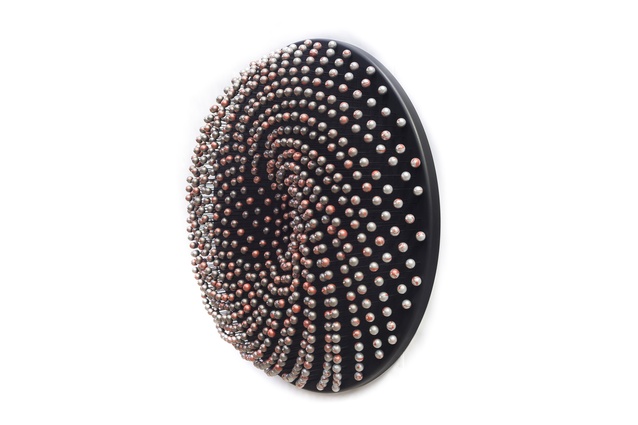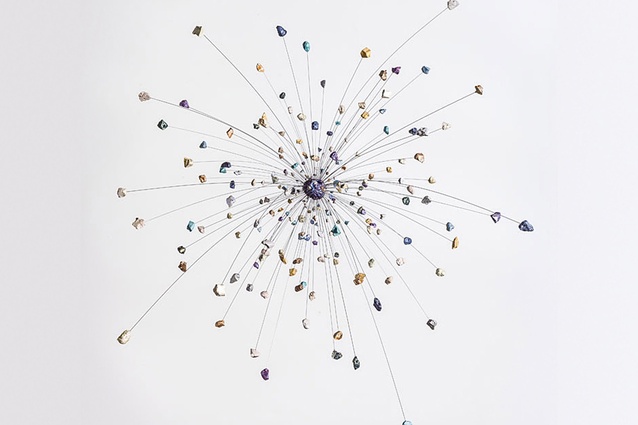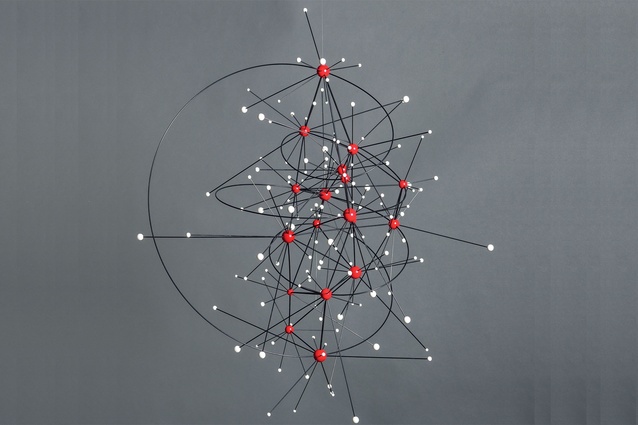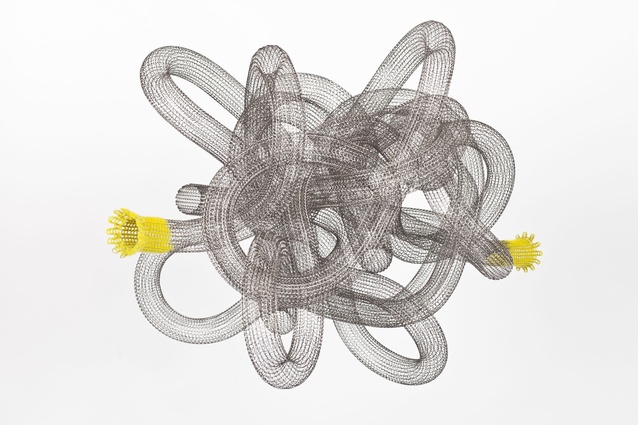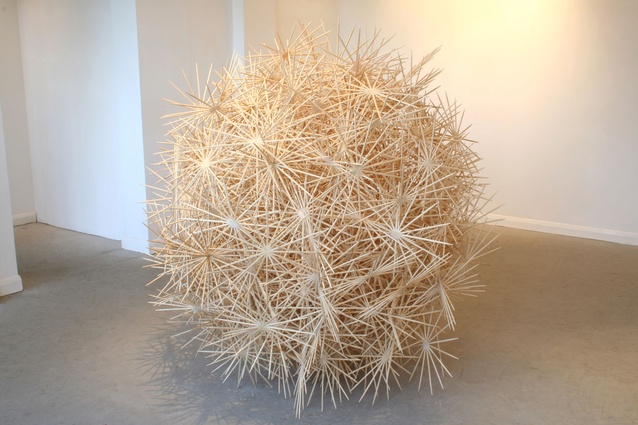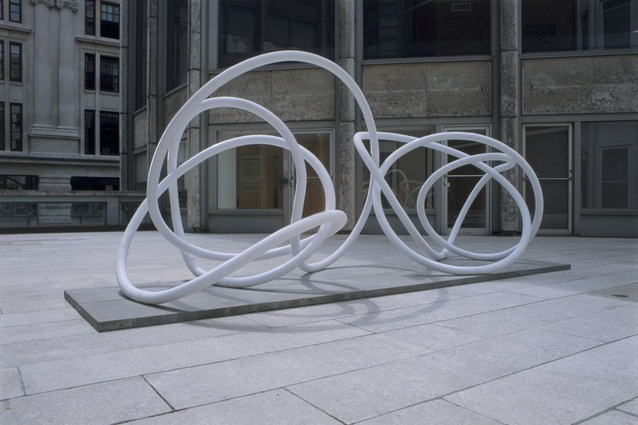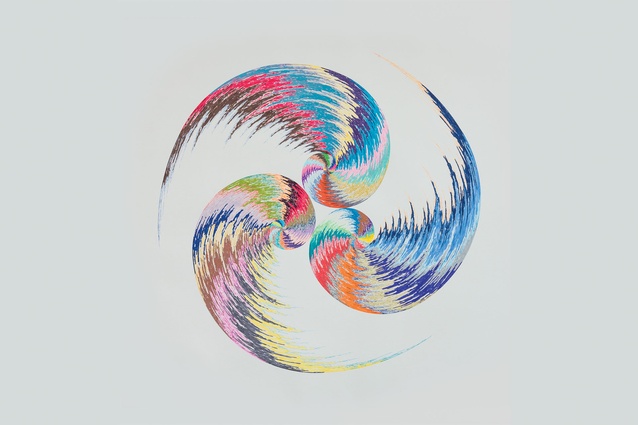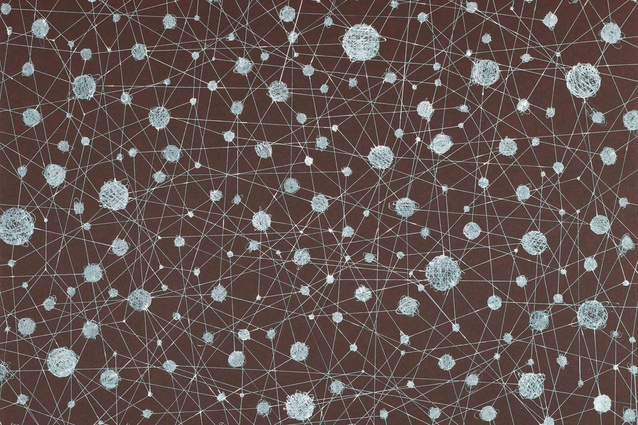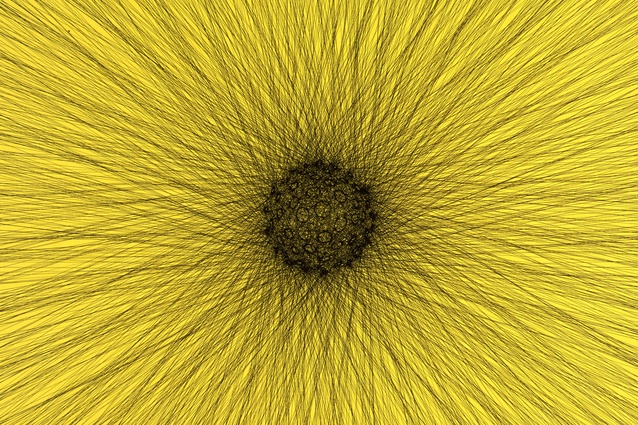Kevin Osmond
Auckland-based British sculptor Kevin Osmond creates artwork inspired by the fabric of the universe. He talks to Justine Harvey about his journey from apprentice cabinet maker to international artist.
Houses: Do you refer to yourself as an artist?
Kevin Osmond: Primarily I’m a sculptor but I also incorporate other mediums into my practice. I draw as well and, in the past, I’ve worked with performance, film and photography.
Houses: Did you always want to be an artist?
KO: Not initially because I grew up in a country village without any art references but looking back now, it seems like kismet that I ended up as an artist. My early inspiration came from watching my grandad’s meticulous approach to building equipment in his garden shed, as well as his drive and work ethic; he’d built a successful bone waste business in the East End of London before World War Two, then moved out to Essex when the bombs started falling.
Houses: How would you describe your artwork?
KO: I investigate natural and celestial phenomena and place it into physical reality, capturing elements that we can’t normally see in the universe around us. My current body of work is often described as ‘optic-kinetic’; some are hanging and interact with the air around them, while others are wall or floor-based and have visual movement. My drawings usually incorporate an intricate building up of pattern and colour. In the end, colour, movement and complex structures seem to be strong themes throughout my work.
Houses: What materials do you typically use?
KO: All sorts: piano wire, tile spacers, carbon fibre rods, stainless steel knitted wire tubing, etc. Initially, I started making my Dripscape series from ping pong balls but now I use smaller wooden balls. I flock-coated the balls at first, which was a pretty unique learning experience that included visiting a flocking factory. Now I dip them all in specialist paint.
Houses: What is your history and where did you train?
KO: I left school at 16 and started out as an apprentice cabinetmaker; then I travelled extensively which broadened my horizons and I decided to pursue a general arts foundation course to find my path. I studied at the Chelsea School of Art & Design in London, followed by a Masters degree, majoring in sculpture, at The Royal College of Art.
Houses: Your work can be incredibly delicate and intricate in its construction. What is your process of creating and making?
KO: A lot of ideas come from doodles in my sketchbook, which might have been there for years. An idea and a material might suddenly marry together in my head one day, then I’ll order the materials and start making. Often it’s a process of just build and go, particularly with my hanging kinetic sculptures, where I don’t usually have a definite form in my mind. The structures usually evolve in themselves, whereas I see drawing as very meditative - it’s like my thinking time. I draw in between making sculpture, which is a more intensely physical process. But, when I see both mediums in a room together, they definitely interact with natural synergy.
Houses: You often draw on mathematical principles such as the Fibonacci sequence or the Golden Spiral. Are you good at maths?
KO: Ha-ha, I wish that were the case. I tend to rely on an instinctive process and transform that into precise work. But mathematics underpins both the natural and man-made worlds, so it inevitably explains any explorations into the nature of the universe.
Houses: You exhibit mainly through the Davidson Contemporary Gallery in New York; how do you send your artworks there?
KO: I make bespoke handcrafted crates with the work suspended inside and surrounded by tiny polystyrene balls. Some are deconstructed into components and reconstructed at the other end by an art handler. They fly to New York and typically arrive on the gallery floor within a day or two. This reminds me of a quote given by Grayson Perry in a recent BBC Reith lecture, which made me laugh because there’s some truth in this when I send out my work: “You’ll never have a good art career unless your work fits into the elevator of a New York apartment block.”
Houses: You’ve also exhibited in London and you regularly show works at Art Basel Miami fair, alongside the greats of American kinetic sculpture and op art - such as George Ricky, Alexander Calder, Pedro S. de Movellan, Carlos Cruz Diaz and Jesus Rafael Soto - what was that like?
KO: It was great and bizarre to know that the work is created in my Henderson studio and ends up in art collections in, say, Paris or Los Angeles. Through this process, I’ve also enjoyed getting to know the works of some of my contemporaries at the gallery, like Kiel Johnson, who created The Great Paper Model with the residents of Christchurch, and Darren Lago and Sam Messenger, who are also amazing artists from the UK. I’ve recently started selling work to collectors in New Zealand, which is encouraging.
Houses: You’ve made large sculptures for The Economist building, Credit Suisse tower and Penguins Books HQ in London; do you have plans to make more large-scaled works?
KO: I’d certainly like to; it was incredible to exhibit in the courtyard of the Smithson’s iconic Economist building. I’ve also designed initial concepts for contemporary room divider screens for a house in Singapore, working with an architect from Rogers Stirk Harbour, but it was shelved; I’d like to develop those ideas further.
Houses: Do you spend your spare time visiting galleries?
KO: I do but I also gain equal enjoyment through my geeky obsession with architectural model shops, which are stacked full of materials to be played with. In London, I used to regularly visit 4D Modelshop and Atlantis Art Materials in the East End. I also love those traditional hardware shops where the man behind the counter, wearing a dun-coloured coat, will find you exactly what you’re looking for - like being in the Fork Handles sketch by The Two Ronnies.
Houses: Would you call your work ‘British art’?
KO: I hadn’t really considered that notion until I moved to New Zealand and several gallerists have stated that my work is from another place. For me, I’m interested in the world around me in the present and recent work includes abstract drawings of the star constellations within the Southern Hemisphere. Although, I guess my work is inherently British because of my education and my formative influences, which include sculptures by Richard Deacon and Tony Cragg, and I appreciate American artist Tom Friedman’s inventive use of materials. However, at the end of day, like music, art is a universal language that crosses boundaries.
Houses: What exhibitions do you have coming up?
KO: I’m involved in art fairs throughout 2015 but I’m particularly looking forward to having a solo show in New York at Davidson Contemporary in October. The gallery has a new two-storeyed space in Chelsea, near the High Line trail, designed by Murdock Solon Architects. Its rooftop sculpture deck has fantastic views of the Empire State Building and the classic NYC skyline, so it’s a great prospect to work towards.
For more information, visit Osmond’s website.

